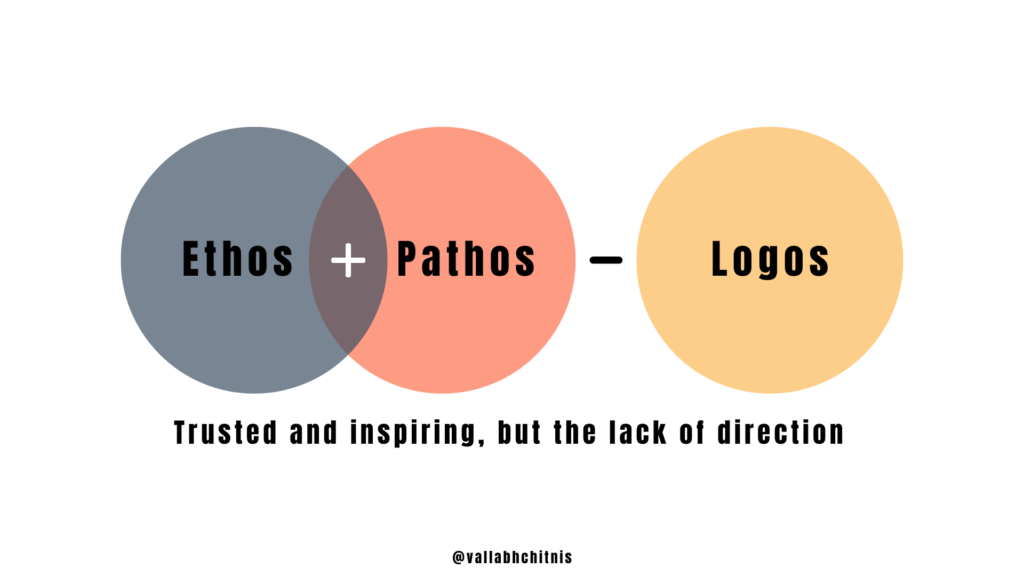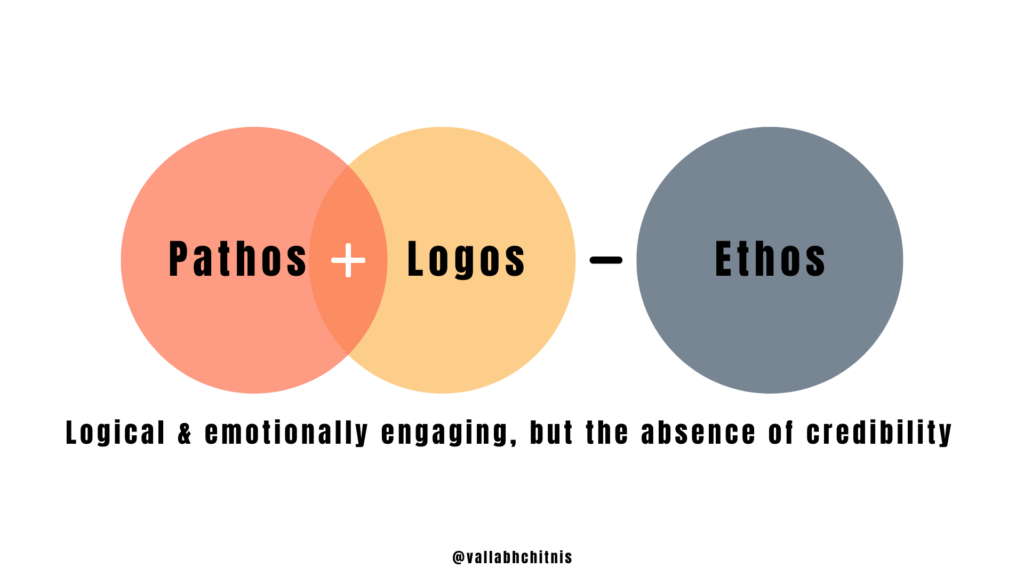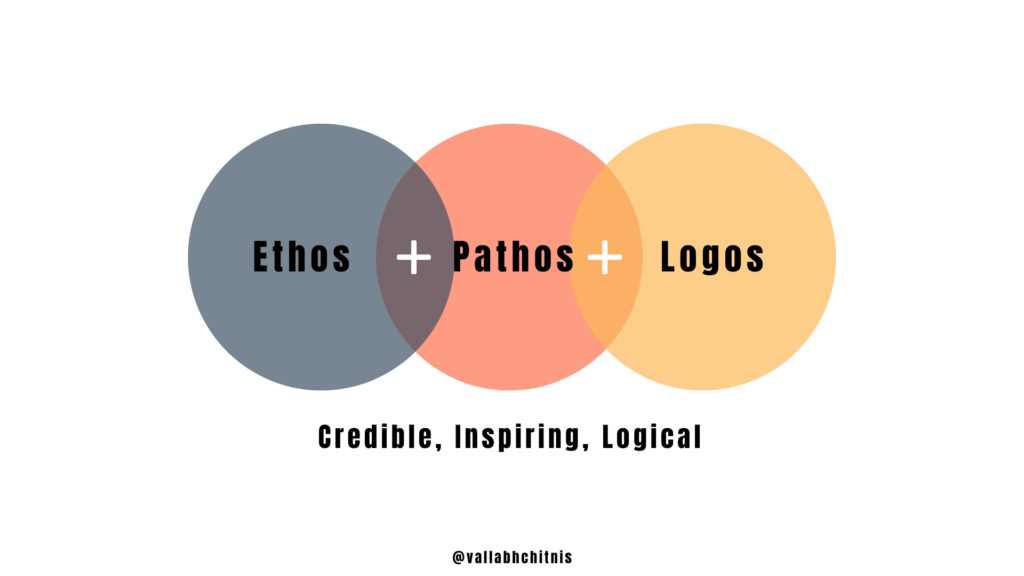Why do some leaders inspire loyalty while others struggle to gain trust?
It is not just about charisma or technical know-how; it’s about mastering three timeless pillars of influence: Ethos, Pathos, and Logos.
Aristotle identified these elements as vital for persuasive communication, but they are just as vital for leadership, which drives engagement and results.
A recent Gallup report shows teams led by high-trust leaders produce 21% more output. Trust isn’t built overnight; it’s cultivated through credibility (Ethos), emotional connection (Pathos), and logical reasoning (Logos).
Here is how these pillars shape great leaders and how you can use them to inspire your team.
Ethos: “Why Should We Follow You?”
Ethos is your credibility, the foundation of trust. Leaders with strong Ethos earn respect by being honest, consistent, and skilled.
They keep promises, own their mistakes, and embody integrity in their actions. Their credibility becomes the bedrock of their influence.
Actionable Steps:
- Keep your word.
- Admit your mistakes.
- Share your knowledge openly.
- Give clear reasoning for decisions.
Pathos: “Why Should We Care?”
Pathos drives emotional connection. Great leaders resonate with their team’s values, inspire belief through storytelling, and demonstrate empathy.
These leaders understand that fostering emotional bonds creates loyalty and motivates teams to align with the vision.
Actionable Steps:
- Listen with the intent to understand feelings.
- Use relatable stories that connect vision and values.
- Recognize big or small achievements to build loyalty.
Logos: “Why Should We Believe You?”
Logos anchors leadership in reason and data. Leaders who use Logos make logical decisions and communicate them effectively, using evidence to back their choices.
Teams appreciate clarity, and logical reasoning ensures everyone is aligned on the ‘why’ behind decisions.
Actionable Steps:
- Validate strategies with data and insights.
- Test assumptions through scenario planning.
- Communicate the logic behind decisions.
The Danger of Imbalance
Mastering these pillars individually is crucial, but true leadership lies in balance. Relying too heavily on one or two pillars creates blind spots that can undermine your leadership.
Ethos + Pathos, but Low Logos:
Trusted and inspiring, but the lack of direction leaves teams uncertain.

A leader who motivates their team emotionally but cannot back strategies with data may lose stakeholder credibility.
Pathos + Logos, but Low Ethos:
Logical and emotionally engaging, but the absence of credibility creates doubt.

A leader who speaks passionately and presents sound logic but fails to deliver on promises. Trust erodes quickly.
Ethos + Logos, but Low Pathos:
Credible and logical, but cold and disconnected. Teams follow data but feel unmotivated.

A leader who relies only on facts and logic may achieve results in the short term but struggles to sustain team morale.
Leaders need balance, a blend of trust, connection, and clarity to avoid these pitfalls.
Why Balance Is Difficult
Balancing these pillars feels uncomfortable because it requires leaders to confront their vulnerabilities. Growth comes from leaning into discomfort and taking deliberate action.
For instance, a technically skilled leader (Logos) might find it challenging to connect emotionally (Pathos) with their team. Recognizing these gaps and addressing them is the first step toward growth.
Moving Toward Balance

Here’s how you can refine your leadership approach:
- Reflect: Which pillar is your weakest? Do you lack trust, emotional connection, or clarity?
- Seek Feedback: Ask peers and team members to identify gaps in your leadership style.
- Invest in Growth:
- Learn storytelling techniques to strengthen Pathos.
- Attend analytics workshops to enhance Logos.
- Seek mentorship to build your Ethos.
- Apply and Iterate: Practice these skills, measure their impact, and make adjustments.
Balanced leadership is a journey, not a destination.
Ethos builds trust. Pathos inspires care. Logos ensures reasoned decisions.
Together, they create a leadership style that is credible, inspiring, and logical.
Ask yourself: Do I give my team a reason to follow me, care about our vision, and believe in my decisions?
Pro Tip: Take 5 minutes today to reflect on your leadership style. Which pillar can you improve starting now? Drop me a message to help you get started.
